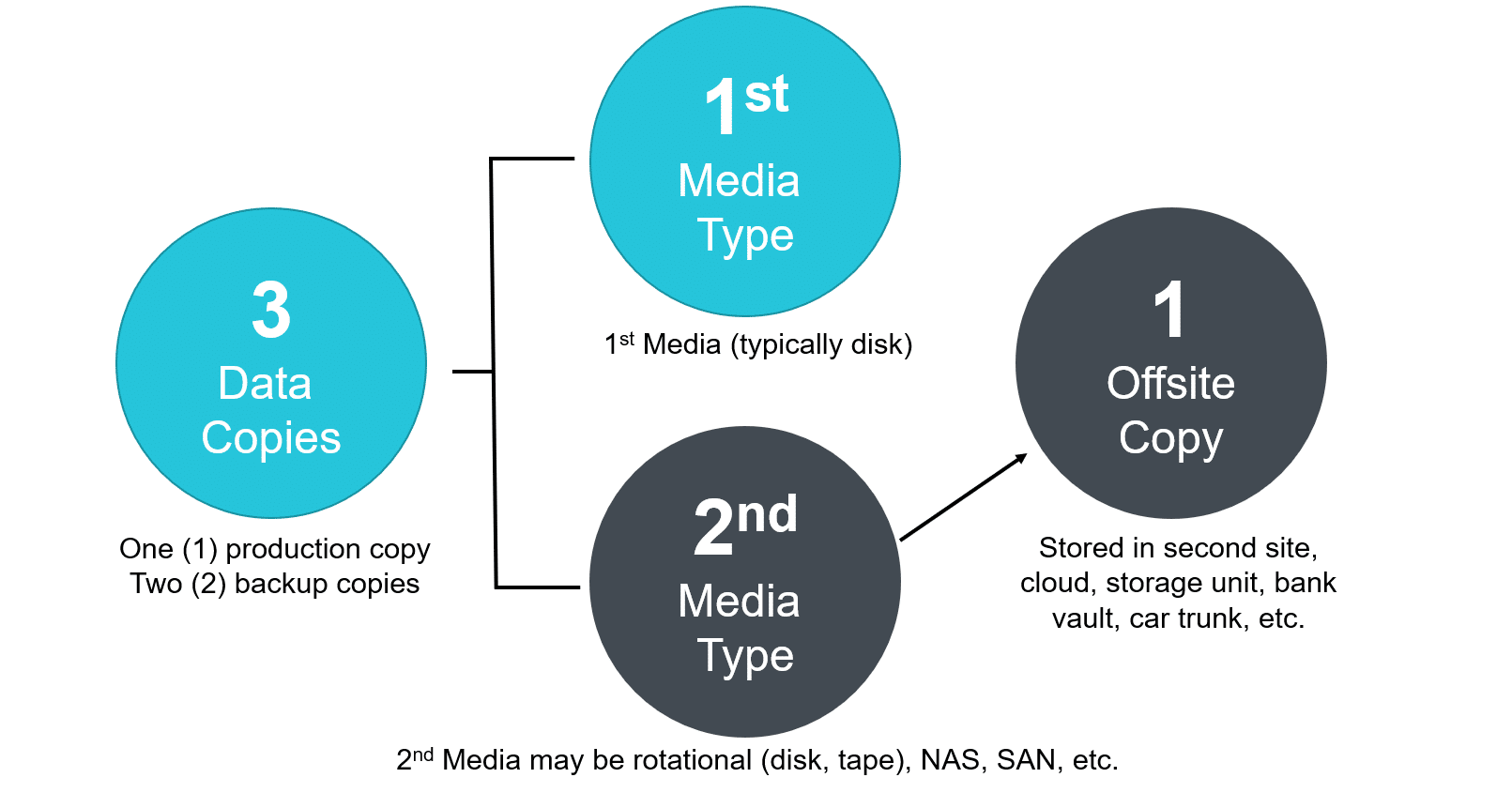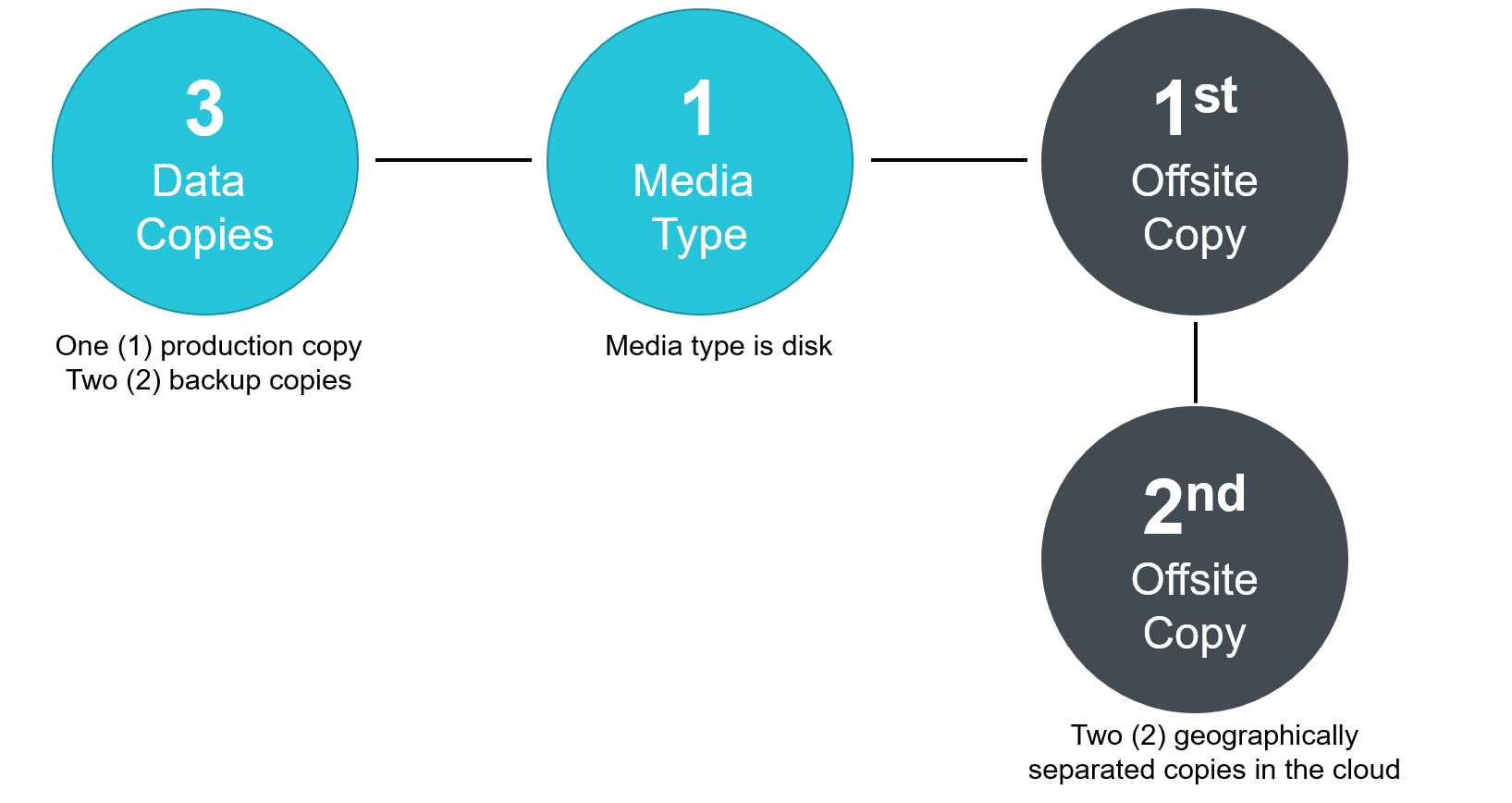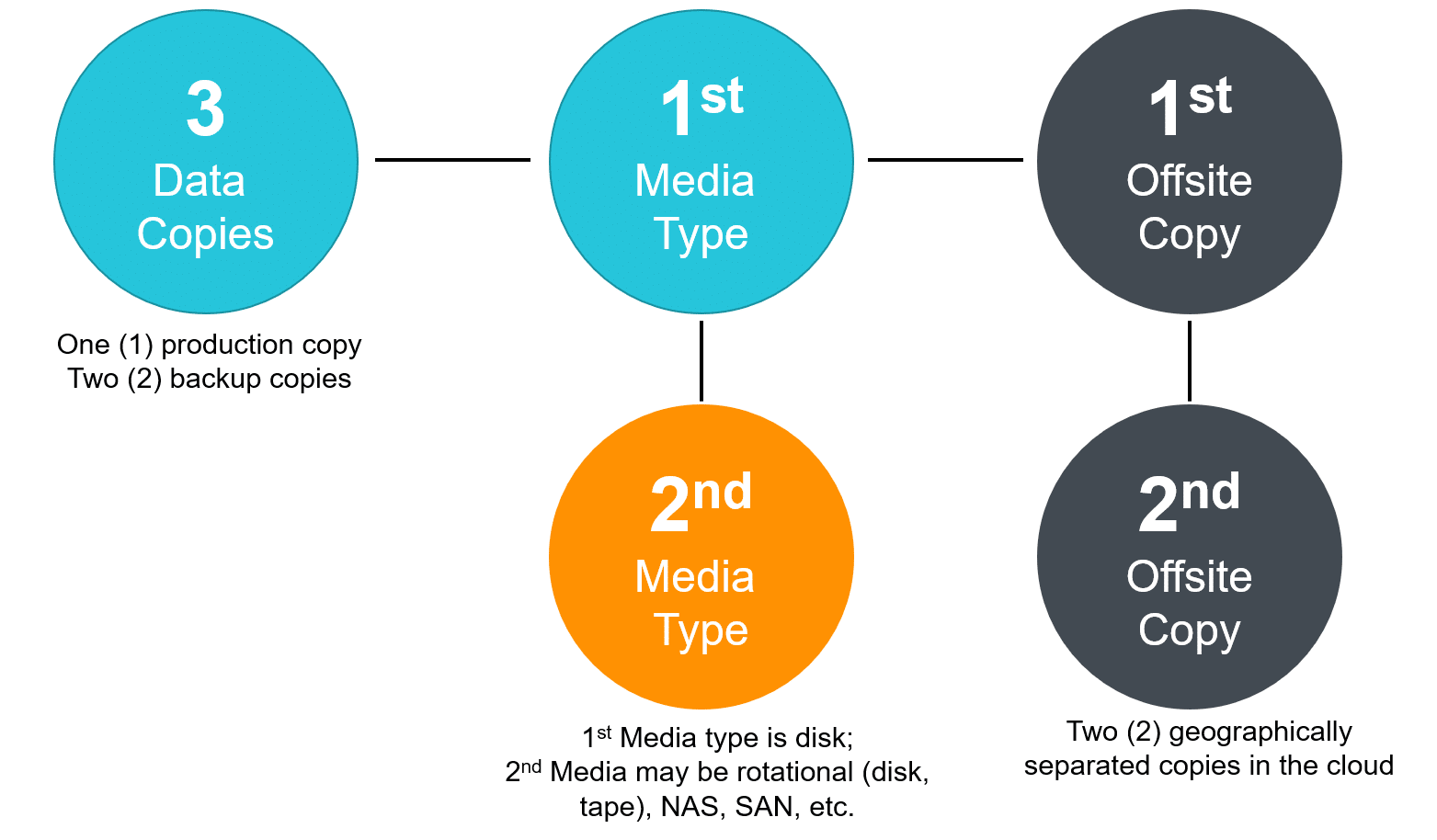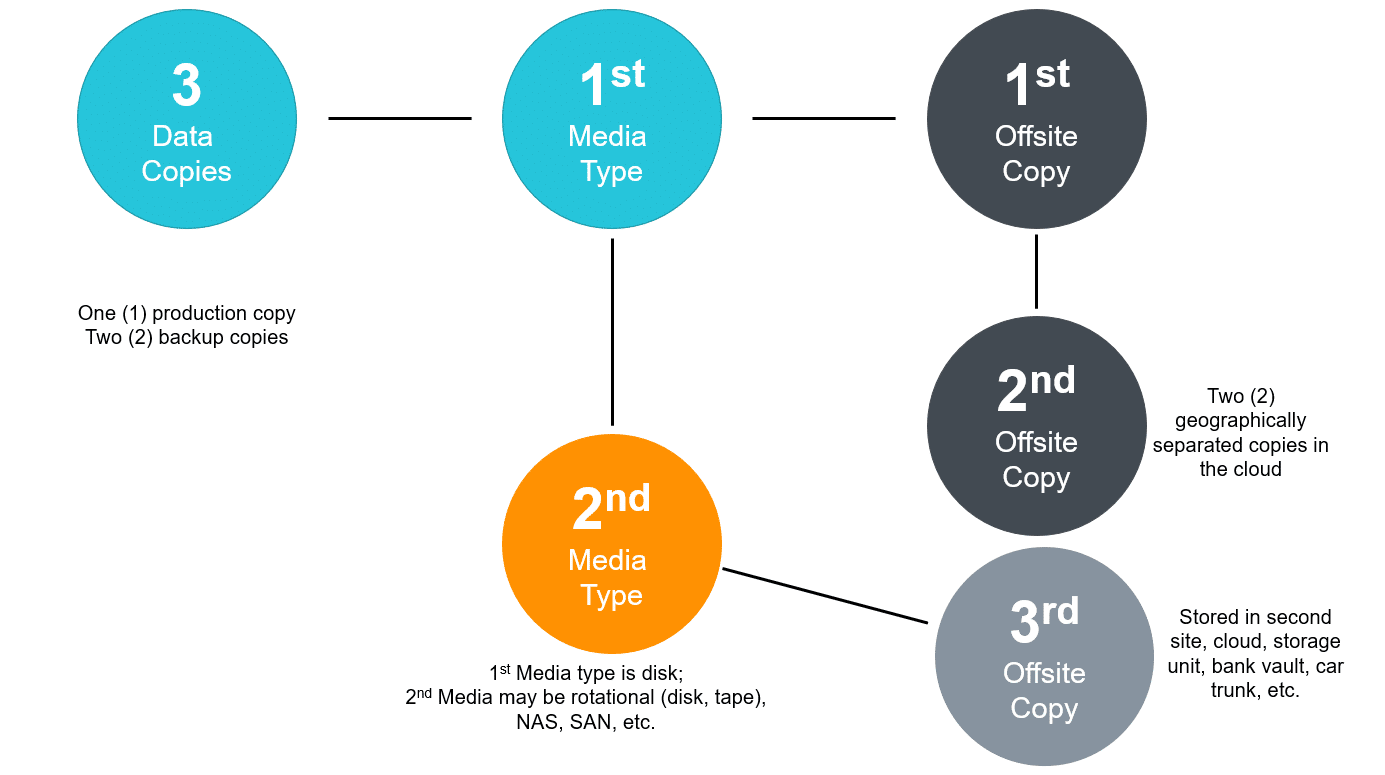The 3-2-1 backup rule is a revered and time-honored backup strategy. It seems like every backup vendor has endorsed it with at least one going so far as to call it “timeless.” The United States Government recommends the 3-2-1 backup; in a US-CERT paper (United States Computer Emergency Readiness Team), Carnegie Mellon recommended the 3-2-1 method.
As in most things associated with technology, what at one time is “timeless” is at the next moment relegated to the scrap heap of history. Or perhaps to be more kind, it’s time for version 2 of the 3-2-1 backup strategy. While it doesn’t roll off the tongue as easily as the 3-2-1 backup strategy,there are multiple strategies ranging from 3-1-2 to 3-2-2 and even a 3-2-3 backup configurations that need to be considered by modern agile businesses.
Unitrends Recovery Series
Unitrends purpose-built backup appliances offer dedicated backup storage isolated from production. Replicate backups to the Unitrends Cloud for secure and immutable offsite safekeeping.
Let’s back up a moment (pun wasn’t intended when I wrote it, but I left it in.) The 3-2-1 backup strategy simply states that you should have 3 copies of your data (your production data and 2 backup copies) on two different media (disk and tape) with one copy off-site for disaster recovery. This is depicted in the figure that follows.

The 3-2-1 backup strategy depicted above was an advancement on the tape-based strategy where you had only one media copy and you took it offsite. So it was an advancement in its time. It was inherently limited, however, due to the technology of the time. With older continuity and backup protection, 3-2-1 was about the best you could do. The second media type was typically tape and depending upon the size of the company using the 3-2-1 backup strategy the options for getting it offsite ranged from hiring a service such as Iron Mountain to putting it in the back of your car. As cloud-based backup companies evolved, they offered 3-2-1 backup via the cloud (and for the most part ignored the second media type in favor of the cloud.) This is depicted below.

Note that you need to ask your backup vendor specifically whether they offer a 3-1-2 as shown or if they offer only a 3-1-1 (one copy in the cloud.) Don’t accept only a single copy in the cloud – it simply doesn’t offer the protection afforded by modern continuity and backup solutions.
I believe that the 3-2-2 backup strategy provides mix of local and cloud-based protection. In this backup strategy, you achieve continuity through the use of both the cloud and a local second media type. The cloud affords you both continuity and extended retention. The local second media affords you another copy of what you have in the cloud in a 3-2-2 backup strategy. This is depicted in the figure below.

The final backup strategy we’ll discuss is a variation of the 3-2-2 backup strategy called the 3-2-3 backup strategy. It is depicted below.

This backup strategy enables you to perform disaster recovery in two different ways – with the cloud and then with physically moving data offsite. In this approach, the cloud does not receive all backup copies – they are split between the first and second media type locally. Typical IT administrators who use this backup strategy are trading increased labor (physically moving data offsite) for lowered spend on WAN bandwidth.
That’s a brief overview of just a few backup strategies. One word of warning – many continuity and backup vendors do not offer this type of flexibility. Even if you don’t need this type of flexibility now, you may in the future. So make sure that your continuity and backup vendor focuses on offering you support for your agile IT environment.
Download our concise checklist to learn how to fully protect all workloads across diverse environments.